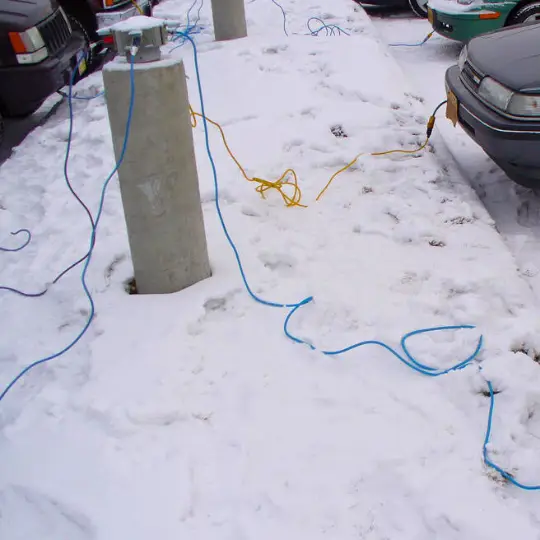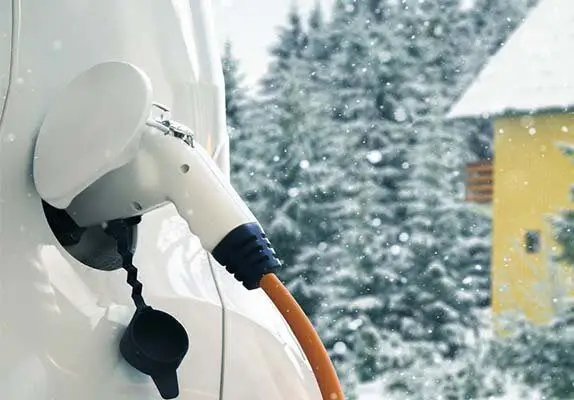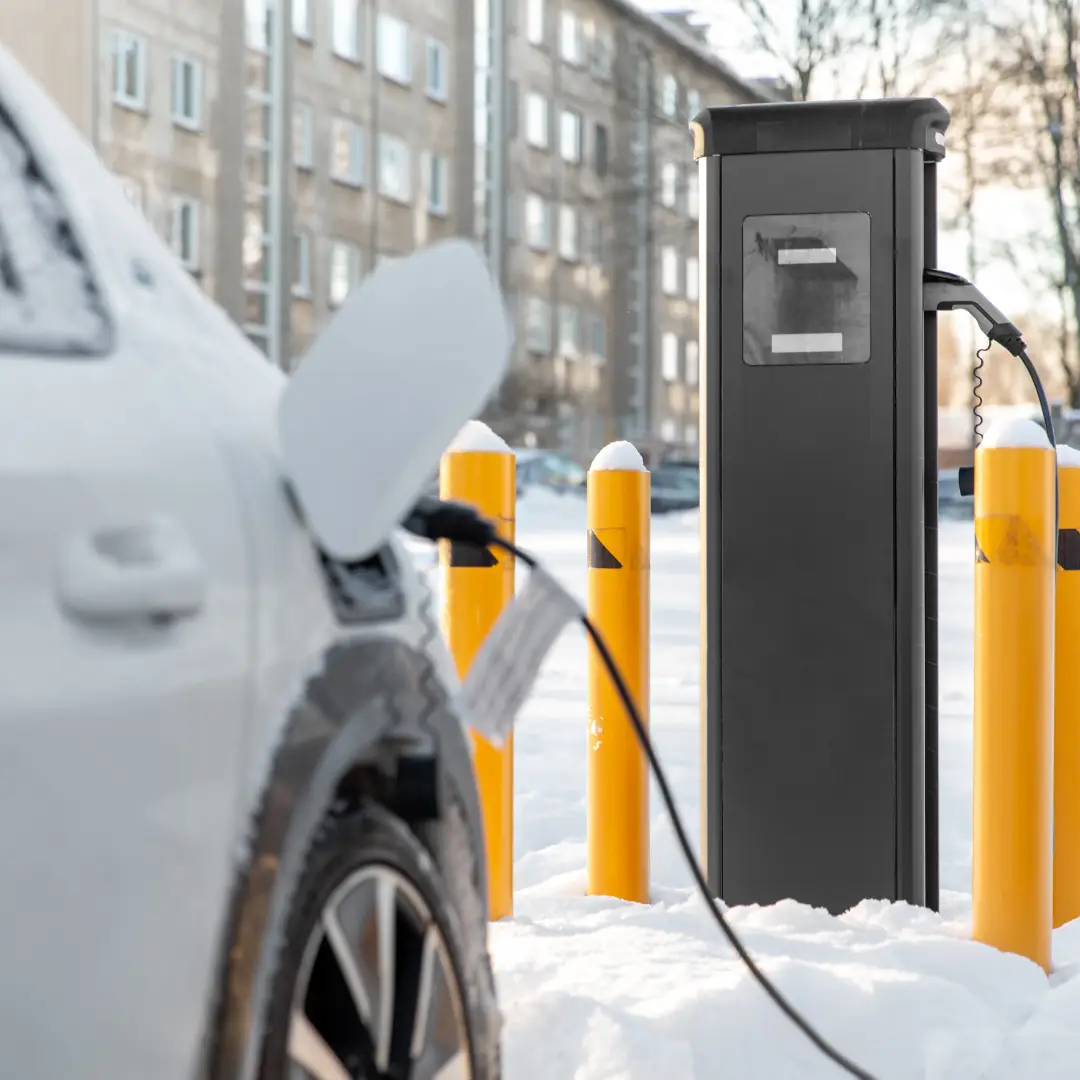As our world evolves, we witness a shift towards sustainable technologies coexisting with less energy-efficient counterparts. On social media, myths circulate about the winter drawbacks of driving electric vehicles (EVs). During these frigid seasons, assessing the impact of various technologies on the power grid becomes crucial, with a particular focus on EV Charging Stations. For comparison, we have picked the Block Heaters that were used to heat car engines over the winter months. In this blog post, we will delve into both and explore which one places a greater strain on the grid.
Block Heaters

Block heaters serve to warm the engine block of traditional cars, preventing issues like difficulty starting in cold conditions. Plugged into electrical outlets, they provide consistent heat to prevent engine fluids from freezing. However, they lack programmability, necessitating continuous usage. This simultaneous demand during the night contributes to peak hours and wasted energy.
In terms of power usage, block heaters consume between 300 to 1500 watts, averaging around 600 watts. Assuming continuous usage for 12 hours, the total energy consumption is 7.2 kWh.
[{text {Energy} = text {Power} times text{time}}]
[{text {Energy} = text {600 Watts} times text{12 hours}}]
[{text {Energy} = text {7,200 Watt-hrs or 7.2 kWh}}]
During extreme conditions, recommended usage for approximately 22 hours increases energy consumption to 13.2 kWh.
[{text {Energy} = text {600 Watts} times text{22 hours}}]
[{text {Energy} = text {13,200 Watt-hrs or 13.2 kWh}}]
Electric Vehicle Chargers

EVs, a cleaner transportation solution, have gained popularity. EV owners often charge their vehicles overnight or at charging stations during the day, allowing control over charging times. The power requirements for EV charging depend on the charger type and the vehicle’s battery capacity.
In a residential settings, a level 2 EV charger typically delivers 7 to 10kw of power. Let’s consider a 2024 Tesla model 3 with a combined cold weather efficiency of 167 Wh/100km and a 50 km daily commute.
[{ text{Energy Consumed by EV}}]
[{ = {text {Energy efficiency} times text{distance} }}]
[{ = {text {0.167 } {kWh over km} times text{50 km} }}]
[{ = {text {8.35 kWh} }}]
Using a 7 kW EV Charger it takes about 1.20 hrs to top this EV battery assuming it started it’s day fully charged.
[{ text{Time to Charge}}]
[{ = {text {Energy} over text {Power}} }]
[{ = {text {8.35 kWh} over text {7 kW}} }]
[{ = {text {1.20 hrs} }}]
Conclusion
In summary, the energy consumption of block heaters and EV chargers is comparable. However, during extreme weather conditions, EV usage tends to be lower in time and power usage. The overall impact on the grid also depends on usage patterns, charging times, and broader energy management strategies.
Considering these factors, EVs hold an advantage as they do not need to be plugged in during peak hours, reducing their damage to the grid and mitigating issues such as temporary spikes in power demand that utilities must accommodate.
Feel free to contact us if you’d like an assessment of the current electrical infrastructure installed in your parking lot.


